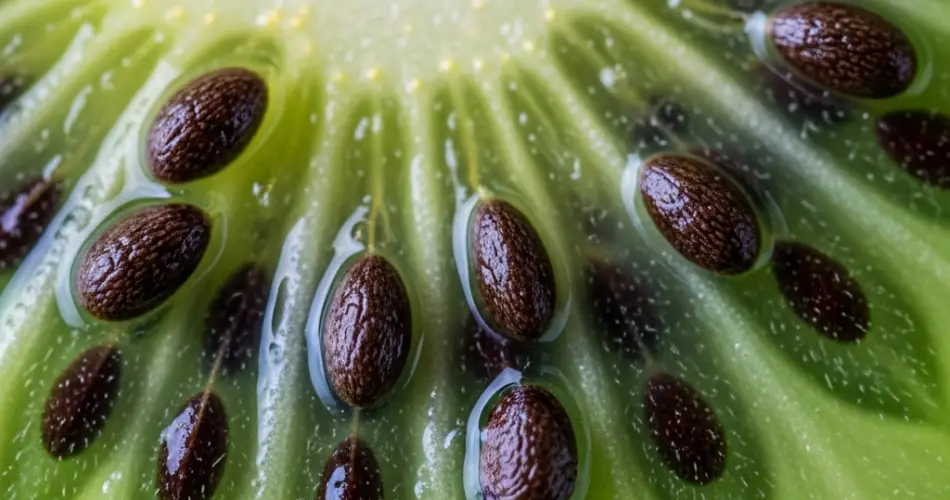Kiwifruit is not only delicious and rich in vitamin C, but it’s also surprisingly easy to grow at home—even from store-bought fruit. While many people assume kiwi plants are difficult to cultivate, with the right method, you can germinate dozens or even hundreds of kiwi seedlings in just two weeks.
Whether you want to start a kiwi orchard or simply enjoy the process of growing your own fruit from seed, here’s a step-by-step guide on how to extract, germinate, and plant kiwi seeds successfully.
Step 1: Choose the Right Kiwi Fruit
Start with a ripe kiwi—ideally organic and fully mature. Organic kiwis are best because they are less likely to have been treated with growth inhibitors or chemicals that could affect seed viability.
You can use green (Actinidia deliciosa) or golden kiwi varieties. Keep in mind that kiwi plants are usually dioecious, meaning you’ll need both male and female plants for pollination and fruit production later on.
Step 2: Extract the Seeds
To extract the seeds:
-
Cut the kiwi in half and scoop out the pulp.
-
Place the pulp into a cup or small bowl with a bit of water.
-
Stir or mash the mixture to separate the seeds from the pulp.
-
Let it sit for a few minutes—viable seeds will sink to the bottom.
-
Carefully pour off the pulp and floating seeds.
-
Rinse the viable seeds using a fine mesh strainer or cheesecloth and let them dry slightly on a paper towel.
Step 3: Pre-Germinate the Seeds with the Paper Towel Method
This is a crucial step that significantly speeds up germination and improves success rates.
Materials Needed:
-
Paper towels
-
A resealable plastic bag
-
Water spray bottle
Instructions:
-
Moisten a paper towel with clean water—damp, not soaked.
-
Evenly spread the kiwi seeds across one half of the towel.
-
Fold the towel over the seeds and place it inside a plastic bag.
-
Seal the bag and store it in a warm, dark place—like a cupboard or drawer.
-
Check daily to ensure the paper towel remains moist and to look for sprouting.
In 10–14 days, you should begin to see small white root tips emerging from the seeds.
Step 4: Plant the Sprouted Seeds
Once the seeds have germinated, they are ready to be transferred to soil.
Materials:
-
Seed trays or small pots with drainage holes
-
Light, well-draining potting mix (you can use a seed-starting mix or a blend of peat, perlite, and compost)
Instructions:
-
Fill your pots or trays with moist potting mix.
-
Use a toothpick or pencil to make shallow holes about 1 cm (½ inch) deep.
-
Place one sprouted seed in each hole, root-side down.
-
Gently cover with soil and lightly mist with water.
-
Place the containers in a bright, warm location—preferably with indirect sunlight.
Step 5: Care for the Seedlings
Kiwi seedlings grow quickly if given the right conditions.
Light:
Keep them in a sunny spot or under grow lights for at least 6 hours a day.
Water:
Keep the soil consistently moist but not soggy. Avoid overwatering, which can cause mold or root rot.
Temperature:
Kiwis prefer a warm environment. Aim for a temperature range of 20–25°C (68–77°F) during the seedling phase.
Thinning:
Once the seedlings reach a few centimeters in height and develop several leaves, you can begin to thin them by transplanting the strongest ones into larger pots.
Step 6: Transplanting and Growth
After 6–8 weeks, your kiwi seedlings will be strong enough to transplant into larger containers or garden beds, depending on your climate.
-
If planting outdoors, wait until all risk of frost has passed.
-
Choose a sunny location with well-drained, slightly acidic soil.
-
Provide a support structure—kiwi vines grow vigorously and need trellises or arbors to climb.
Note that kiwi plants typically take 3 to 5 years to bear fruit when grown from seed. Also, since seedlings may not be true to the parent plant, fruit quality and plant sex can vary.
To ensure fruiting later, consider planting several seedlings to increase the chance of having both male and female plants. Once the plants begin to flower, you’ll be able to identify their gender.
Final Tips
-
Patience is key—kiwi plants are fast-growing but take time to mature.
-
For colder climates, consider growing kiwi in large pots so they can be moved indoors in winter.
-
Prune regularly to manage growth and encourage better airflow and fruiting.
-
If you’re interested in quicker fruit production, grafting a seedling onto a mature rootstock is an option.
Conclusion
Growing kiwi from seed is a fun, cost-effective, and satisfying way to explore home gardening. With just one ripe kiwi and a bit of time, you can generate hundreds or even thousands of seedlings in two weeks. Whether you’re aiming to cultivate fruit or simply enjoy the challenge of germinating plants from scratch, kiwi is an excellent project for gardeners of all experience levels.



